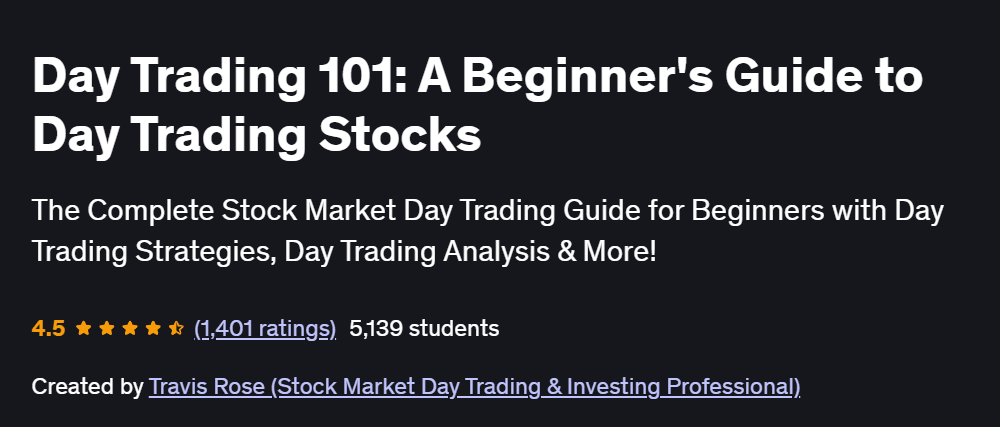What will you in Day Trading 101: A Beginner’s Guide to Day Trading Stocks Course
Understand how the stock market operates and what causes price fluctuations.
Learn how to start day trading with no prior market experience.
Use simple technical and fundamental analysis strategies to profit in any market condition.
Create a trade plan to minimize risk while trading.
Identify and trade predictable chart patterns.
Control emotions and develop trading psychology.
Program Overview
Module 1: Introduction to Day Trading
⏳ 30 minutes
Overview of the stock market and day trading basics.
Understanding price fluctuations and market dynamics.
Setting up a trading account and choosing a broker.
Module 2: Technical Analysis Fundamentals
⏳ 45 minutes
Reading and interpreting stock charts.
Identifying candlestick patterns and chart formations.
Using technical indicators like moving averages and RSI.
Module 3: Trading Strategies and Techniques
⏳ 45 minutes
Developing a day trading strategy.
Understanding entry and exit points.
Implementing risk management techniques.
Module 4: Trading Psychology
⏳ 30 minutes
Recognizing emotional triggers in trading.
Techniques to maintain discipline and control over emotions.
Building a trader’s mindset for long-term success.
Module 5: Real-World Application
⏳ 30 minutes
Analyzing real trades and market scenarios.
Applying learned strategies in live market conditions.
Reviewing and learning from past trades.
Get certificate
Job Outlook
- Day trading offers opportunities for individuals seeking to generate income through short-term trades.
- While it can be profitable, it also carries significant risk and requires a strong understanding of the markets.
- Success in day trading often depends on discipline, strategy, and continuous learning.
Specification: Day Trading 101: A Beginner’s Guide to Day Trading Stocks Course
|
FAQs
- U.S. brokers often require $25,000 to avoid pattern day trading restrictions.
- Beginners can start with smaller amounts through cash accounts or micro-brokers.
- Trading with limited capital requires stricter risk management.
- International brokers may have different requirements.
- Many traders begin with $500–$2,000 for practice and learning.
- Yes, most brokers offer demo accounts with virtual funds.
- Paper trading allows you to test strategies without losses.
- Helps develop confidence and refine entry/exit timing.
- Not a perfect replica since emotions are absent in demo trading.
- Recommended before committing real capital.
- Day trading requires monitoring markets in real time.
- Full-time traders dedicate entire market hours.
- Part-time traders can trade specific sessions or time zones.
- Swing trading may suit those with less daily availability.
- The course helps beginners understand which approach fits their lifestyle.
- Day trading is riskier than long-term investing.
- Market volatility can cause rapid gains or losses.
- Requires strict stop-loss discipline to control risk.
- Emotional control is crucial to avoid impulsive trades.
- Long-term investing typically offers steadier returns.
- The course provides a strong foundation in strategies and psychology.
- Profitability depends on discipline and continued practice.
- Additional resources like advanced trading courses may be needed.
- Market conditions change, so constant learning is required.
- No course can guarantee profits—skill development takes time.





